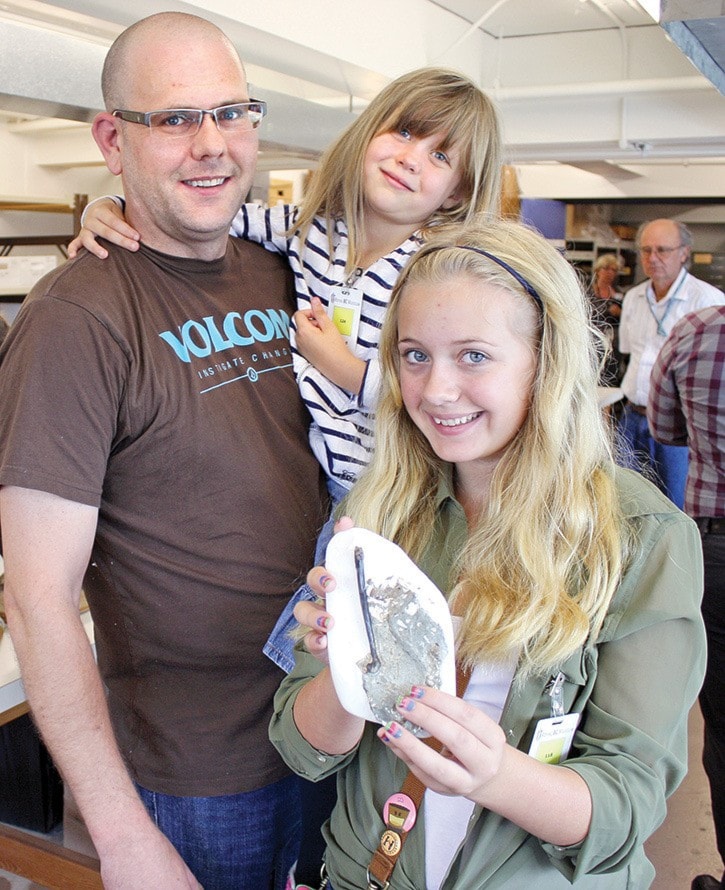Steve Suntok likes to spend his weekends in search of buried treasure.
Armed with a four-pound hammer and concrete chisel, the Langford father of three wanders the intertidal areas northwest of Sooke, his trained eye methodically scanning for curious colours, shapes and textures embedded in the wet rock.
“My kids wanted to find fossils, so we joined the local paleo society and I’ve been hunting ever since,” says the criminal defence lawyer, standing in the Royal B.C. Museum’s palaeontology lab beside daughters, Leah, 13, and Reese, 5.
Suntok is causing a stir amongst the museum’s experts for salvaging a 25-million-year-old bone, only the second of its kind ever discovered from the Carmanah Group rocks off Vancouver Island.
The 15-centimetre shinbone may not inspire awe in the layperson, but it’s the rarity of the find that has people like Gary Kaiser, Royal B.C. Museum research associate and fossil bird expert, singing Suntok’s praises.
“Right away, I can tell it’s a shinbone because they have this peculiar shape at the end,” Kaiser says, pointing out the tear-drop ankle of the now-extinct bird.
The robust bulb of bone at its base suggests it was a strong swimmer, most likely a cormorant, he says.
“The closest bird we have is the Brandt’s cormorant,” he says, holding up a comparable bone from the museum’s vast archives. “We have three species of cormorants in B.C. today.”
Kaiser drags a wheeled cart from the corner of the lab with what looks like an egg-shaped slab of concrete covered in seashells, a sample of the rich paleontological fields that stretch from Sooke north to the Brooks peninsula.
“People actually dig these up in big blocks and chip away at it for the winter months, hoping they’re going to find a shark’s tooth or something,” Kaiser says. It’s a practice that can destroy precious evidence of both provincial and global heritage, says Richard Hebda, curator of botany and earth history at RBCM.
“This is just a little flash of life 25 million years ago,” Hebda says. “Fossils are fun, but they’re also fundamental. … WIthout them, it’s very difficult to understand (earth’s) story, even our own evolution.”
The plethora of shellfish and other marine fossils from the area helped Kaiser and his colleagues date the cormorant bone, while further precision can be found through radioisotope dating.
In addition to the cormorant fossil, Suntok is donating another half-dozen specimens to the museum’s collection, a welcome act of generosity and respect for the discipline of palaeontology, Hebda says.
For more information about RBCM’s fossil collections, visit the museum in person or online at royalbcmuseum.bc.ca.
dpalmer@vicnews.com
